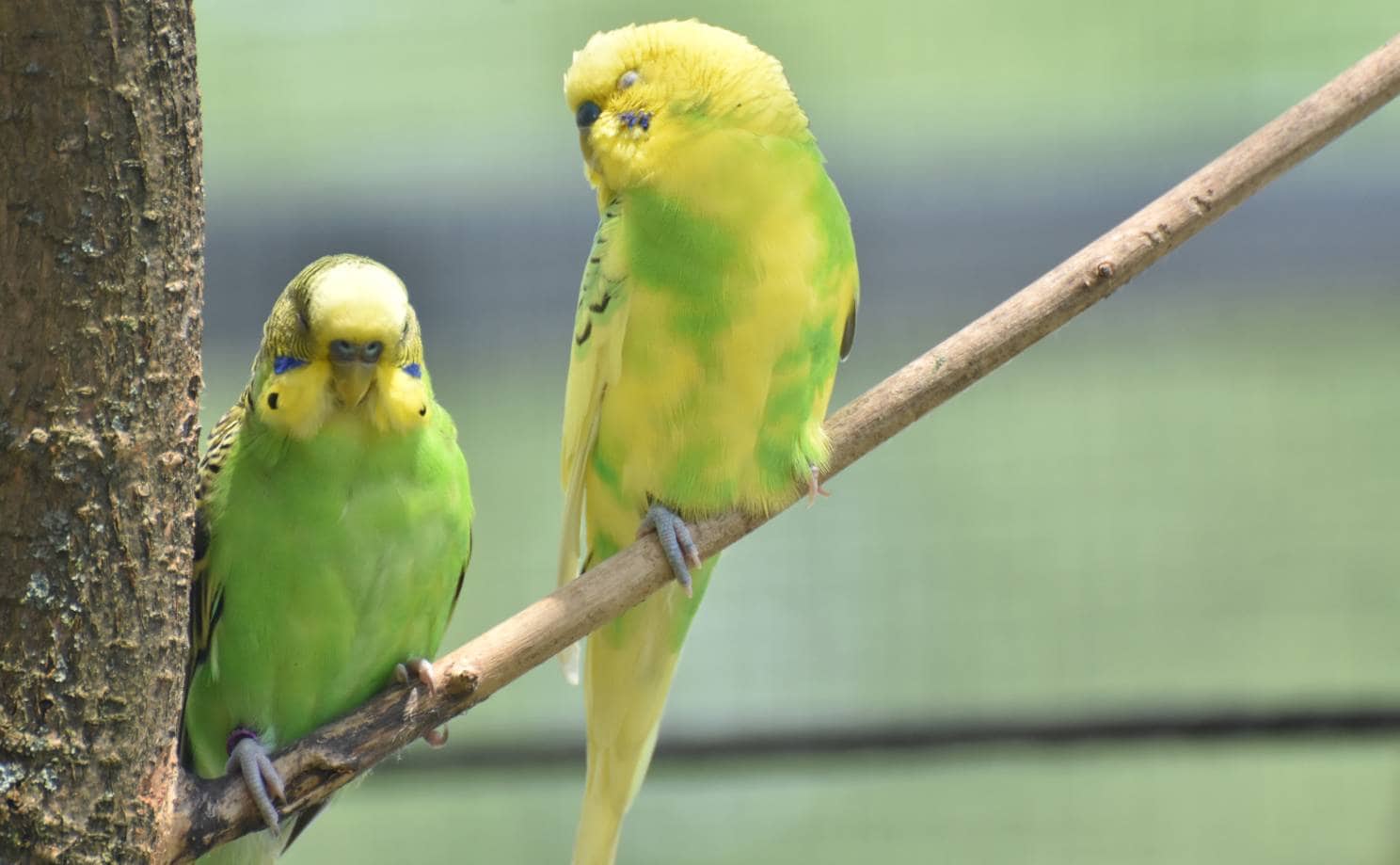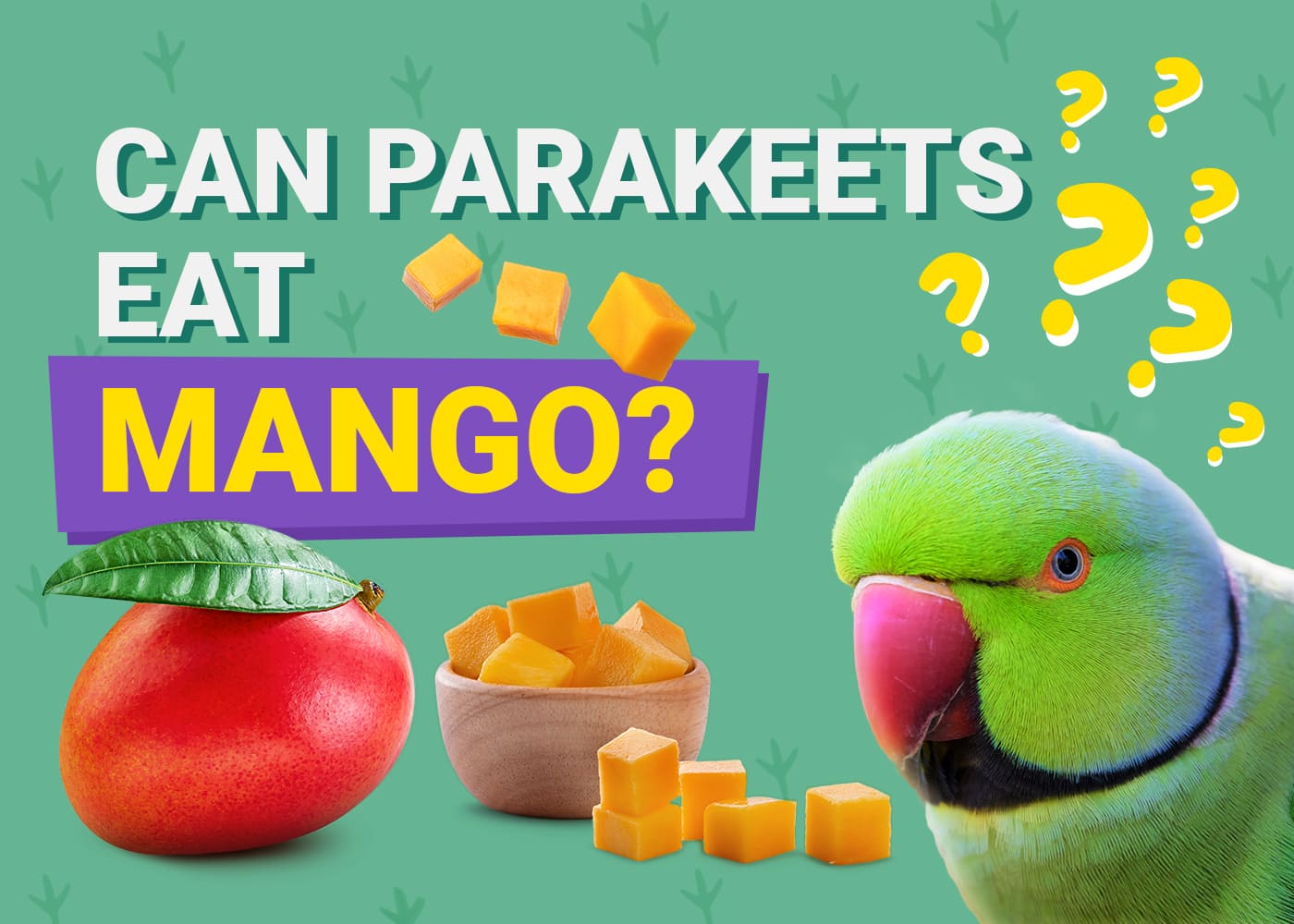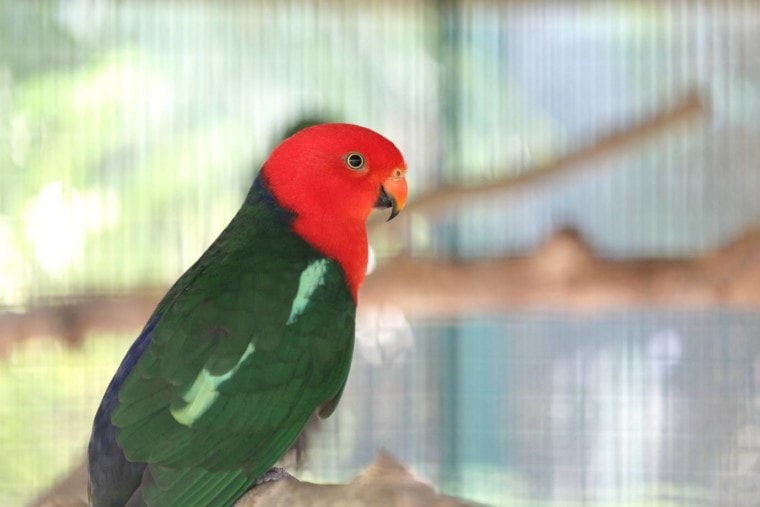
The Australian King Parrot is a colorful, large parrot. It is native to Australia, where it can regularly be seen in woodland and farms and is also kept as a pet. Although less popular in the US, its calm nature and striking colors make it a good bird choice, albeit with the caveat that they are not known for enjoying a lot of hugging and holding. It will need hand-taming, but the biggest challenge of owning this type of parrot is usually the large cage requirements it has. Read on to see whether this striking bird could be the ideal choice for your next pet.
 Species Overview
Species Overview
| Common Names: | Australian King Parrot, Green-Winged King Parrot, Eastern King Parrot |
| Scientific Name: | Alisterus Scapularis |
| Adult Size: | 16-18” long |
| Life Expectancy: | 30 years |
Origin and History
Native to the east coast of Australia, this parrot is attracted to forests, woodland, and to areas where there are large growths of eucalyptus and other trees. They may move to other green areas, including parks and farmland, when foraging.
They are considered to be stable and the breed is not under threat of extinction. However, their chosen habitat means that they could lose habitat to continued deforestation in the region.
The Australian King Parrot was first described in 1818 by Martin Lichtenstein. Like other breeds of King Parrot, the Australian King Parrot primarily eats seeds but will also eat berries and foliage as well as some nuts, fruits, and blossoms.
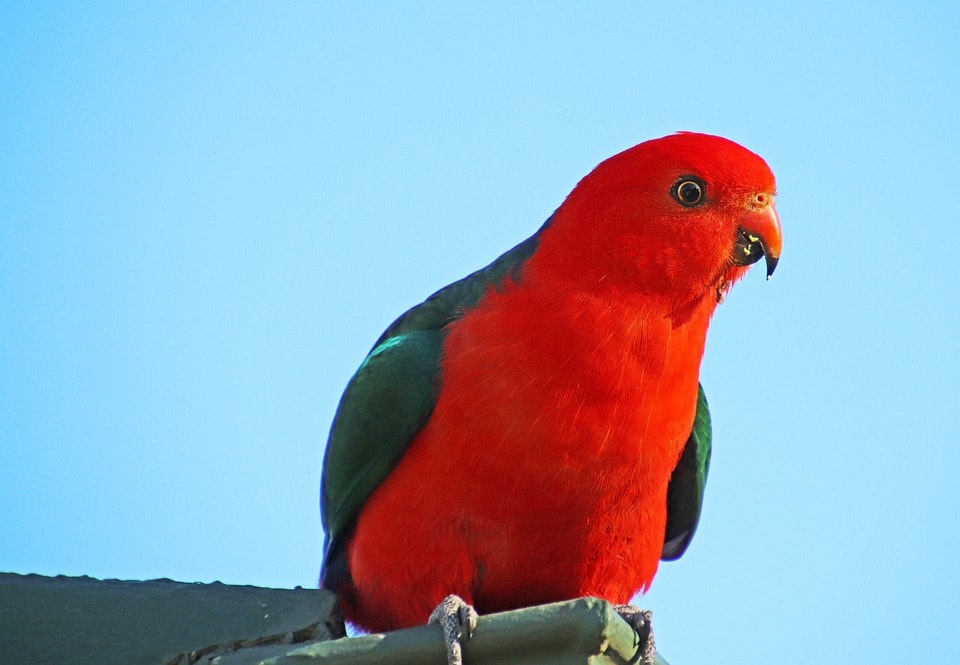
Temperament
Often described as sweet and friendly, the Australian King Parrot is popular with owners. It does not usually demand, or even enjoy too much handling, but if it has been hand-reared it will tolerate some time on the hand. They can be entertaining pets that enjoy having some toys in their enclosure. Toys not only keep your bird entertained but can help keep their mind and their bodies active, which is especially important when kept in captivity in your home.
Because the species does not form as strong a bond with its owner, it is unusual for this attractive bird to say more than a few words. While it has a loud screech that it uses to communicate in the wild, a well socialized and content King Parrot will not usually use these loud noises when in captivity and is usually considered a peaceful parrot breed.
Speech & Vocalizations
While it does have the ability to pick up and repeat a few select words, the Australian King Parrot is considered a quiet bird. It does not form the same close bond with its owner as other species, so while it is a sociable bird, it won’t have the same broad vocabulary as something like an African Grey.
Australian King Parrot Colors and Markings
The Australian King Parrot is a wonderfully colorful species and is very dimorphic, which means that males and females have distinctly different markings and patterns.
The male is the only parrot to have a completely red head. They also have bright red feathers on their chest. Also known as Green-Winged King Parrots, their back and tail are green, while their wings have blue feathers.
The females have some red plumage on their chest and blue on their behind, while the rest of the feathers are primarily green.
Although they have distinct color differences, both sexes will grow to the same size: approximately 17 inches in length, including the tail.
 Caring for the Australian King Parrot
Caring for the Australian King Parrot
Although they do not like a lot of handling, Australian King Parrots do make good pets. They are gentle and, as long as they are well socialized and hand-tamed, they are a pleasant parrot to keep.
Acrobatic and lively, this species needs a large cage, measuring at least 12 feet long and 4 feet wide. This gives them enough room to freely move around and stretch their wings. If the bird will spend most of its time in the cage, you should consider giving it more space.
The parrot does not appreciate a busy environment and may try to avoid loud noises and too much activity by retreating in its cage.
Start handling your King Parrot when it is young and socialize it with other people. This will help ensure that yours is friendly and amenable. The breed does not tend towards aggression and rarely bites, although as with any parrot species, there is always a risk of biting if the bird is startled or hurt. It is not usually a particularly destructive bird, so furniture and light fittings should be safe even when you let your King Parrot out of the cage. To further ensure yours does not chew or destroy furniture, provide toys in and outside their cage.
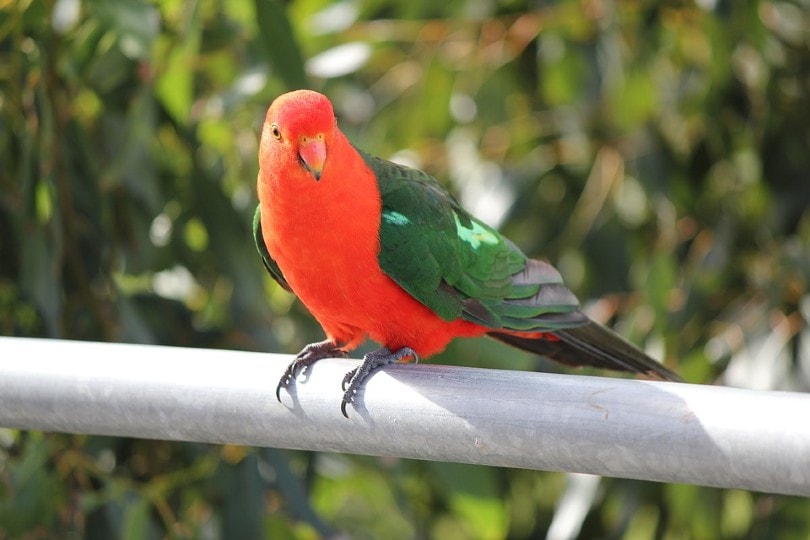
Common Health Problems
The most common health concern for this species is a bacterial infection known as bacillus. This condition is very difficult to treat and can prove fatal. It is also easily passed between birds, so you will need to quarantine any new birds to ensure that they do not have or pass on this bacteria.
Ensure the bird’s cage is raised off the ground to avoid intestinal parasites. These are evident in feces. The parasite destroys the bird’s intestinal lining. Eventually, the bird becomes too weak to fly and dies. Such parasites are usually avoided by ensuring that the cage is kept off the ground and that new birds are properly quarantined before being introduced.
Diet and Nutrition
The seed-eating King Parrot enjoys a similar diet in captivity. You can feed a small seed mix and add fruits like apples and bananas to supplement their diet and to mimic the fruit and foliage that they would eat in the wild. If available, provide foraging branches such as eucalyptus and gum tree to match those that they would eat from in the wild. Foraging toys can also be used. Replace these every few weeks and they will not only provide your bird with feeding opportunities but they will exercise the parrot’s brain.
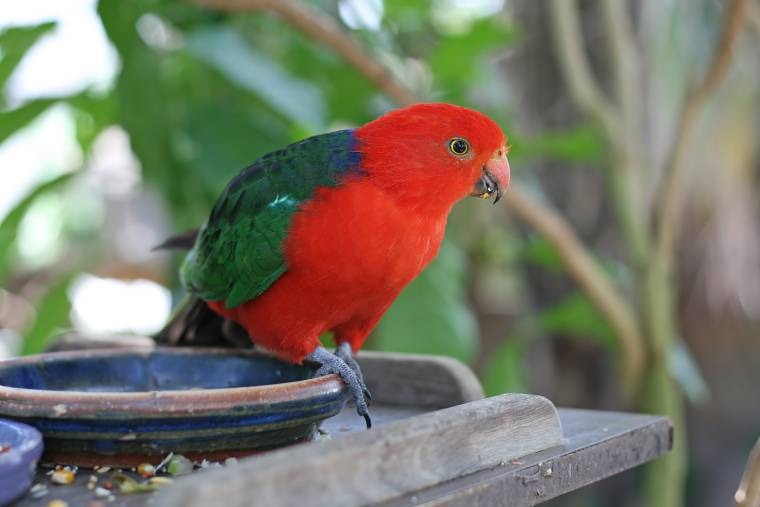
Exercise
They are a large parrot and they require plenty of exercise to ensure good condition and a friendly demeanor. As well as ensuring that you provide an adequately sized cage, this means offering toys like swings, natural branches, and other toys. You should provide your King Parrot with at least a couple of hours out of the cage every day, as well.
Where to Adopt or Buy an Australian King Parrot
Not yet as popular in the US as in their homeland of Australia, this breed is on the cheaper end of the King Parrot price bracket and will cost around $300 or $400. As such, it is considered one of the cheaper species of talking parrot. If you are buying from a breeder, ensure that you check out their facilities and try to meet some of their birds. Look at cage conditions, make sure they have had some socialization if old enough, and look at the mother bird to ensure that it is healthy and sociable.
Although the breed is still quite rare in the US, it may be possible to find one that needs adoption. You may not have access to as much information regarding an adopted bird but you can still check that it is healthy and that it is not so scared of people that it would not make a friendly pet.
 Conclusion
Conclusion
The Australian King Parrot comes from Australia, where it is a common wild bird and is frequently kept as a pet. Because it does not learn as many words as some other parrot species, it has not become as popular in other countries. However, it is a beautifully colored bird that is friendly enough. It can learn a few words and other than requiring a lot of cage space, it has quite minimal care requirements, making it a good choice for a pet parrot.
Featured Image Credit: Atthapol Saita, Shutterstock

 Species Overview
Species Overview